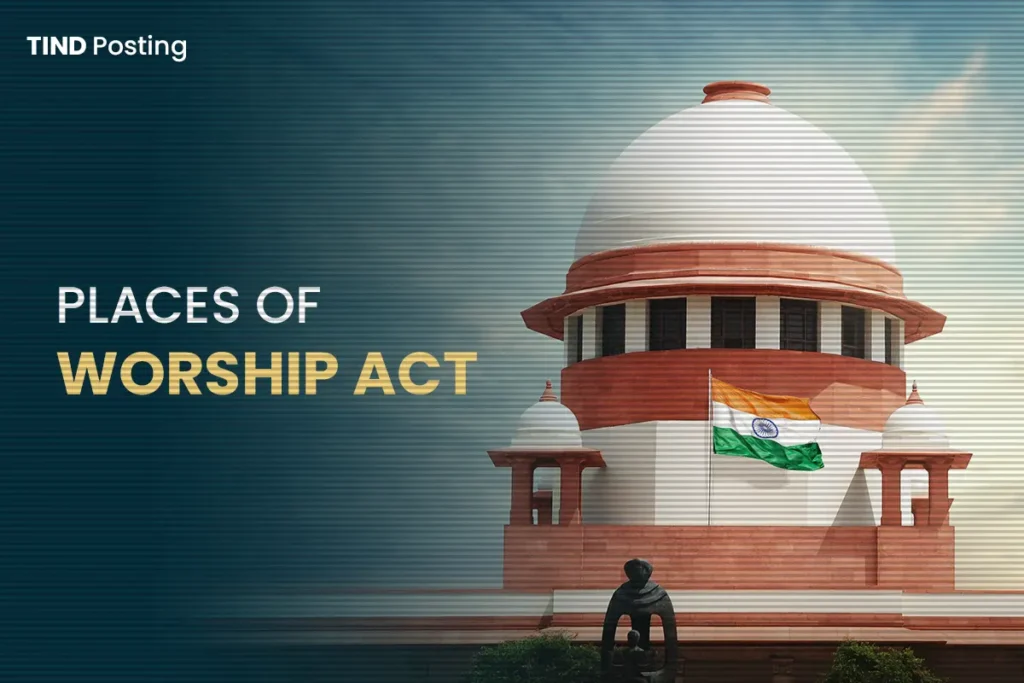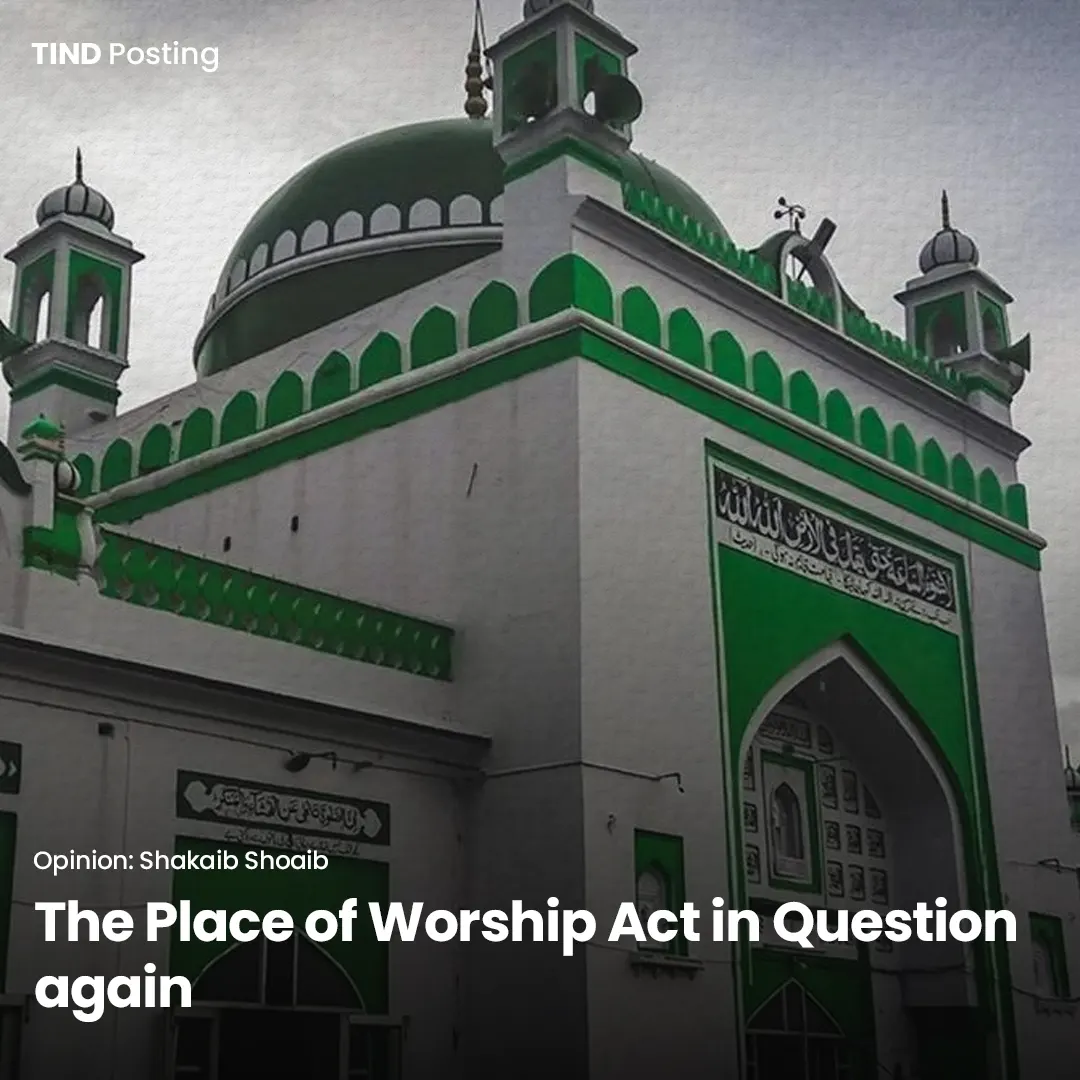The disturbance in Sambhal over the recent controversy related to Shahi Jama Masjid has once again brought the Place of Worship Act 1991 into debates. On November 19th, a petition was filed in the district and sessions court of Sambhal by advocate Hari Shankar Jain claiming that the Shahi Jama Masjid was built on the spot where ancient Hari Har Mandir stood. Following this petition a survey order was passed by the court on November 19th itself.
The committee of the Mosque claims the court’s decision to be hasty without giving the other party a time to present their case. The second survey held on the morning of 24th November turned violent after the spread of misinformation about digging activity going inside the sacred premises. Mashood Ali Farooqui- an advocate who was one of the members of the survey highlighted about the misinformation spreading quickly that the survey team was digging inside the Mosque and it triggered the crowd gathered around the mosque. He also denied the presence of any contradictory evidence.
In light of these events the Place of Worship Act 1991 again takes the centre stage. It has already been one of the most discussed topics in recent years with various such claims and petitions reaching the court of law.

The Place of Worship (Special Provisions Act) 1991 bars the conversion of Places of Worship stating that:
- No person shall convert any place of worship of any religious denomination or any section thereof into a place of worship of a different section of the same religious denomination or of a different religious denomination or any section thereof.
- The religious character of a place of worship existing on the 15th day of August, 1947 shall continue to be the same as it existed on that day.
Thereby it clearly abandons any act of conversion regarding the character of a religious place as it stood on 15th of August 1947. However there are certain exceptions to it.
The Act exempted the Babri Masjid of Ayodhya. Also, any place of worship covered by the Ancient Monuments and Archaeological Sites and Remains Act, 1958 remains exempted from the act.
The Shahi Jama Masjid which was built by the Mughal Emperor Babur in the 16th century stood as a Mosque on the freeze date of the act.
The question currently is regarding the grounds on which the survey orders were issued for a place protected by the Place of Worship Act 1991. Even in 2019 the Supreme Court upheld the Place of Worship Act stating that the court cannot entertain claims that stem from the actions of Mughal rulers against Hindu places of worship today.
The petitioners claim that the monument is covered under Ancient Monuments and Archeological Sites and remains act 1958 and section 18 of the act grants the public the right of access to protected monuments but the petitioners failed to identify that the section 16 of the same act guarantees the protection of place of worship from misuse, pollution or desecration.
It states a protected monument maintained by the Central Government under this act which is a place of worship or shrine shall not be used for any purpose inconsistent with its character. Also the petition has brought the statement of previous CJI DY Chandrachud into discussions again. During the 2022 Gyanvapi Mosque case, the then CJI stated that ascertainment of a religious character of a place, as a procedural instrument may not necessarily fall foul of the provisions.
This statement by the CJI indirectly allows the authorities to conduct surveys and research with the aim to ascertain the character of the place but there exists a logical fallacy to this. When the Place of Worship act 1991 abandons conversion of the character of any such places, even after conducting surveys the end goal remains blurred inviting critics towards this statement. Sanjay Hegde- a senior Supreme Court lawyer is of the view that by closing the Ayodhya verdict, the top court had believed that it has pushed the genie of communal majoritarianism back in the bottle further adding that DY Chandrachud’s unguarded comments in the Varanasi case, which were not even sought by counsel for the parties, stoked the fires across the country and the genie resurfaced with fresh claims.
Aasif Mujtaba- a research scholar and activist states that the only person responsible for what is happening in Sambhal is the retired Chief Justice of India DY Chandrachud. By opening the floodgates of Places of Worship Act 1991, he made it simple for any lower judiciary with Hindutva inclination to order for checking the existence of temples beneath every Mosque or Muslim houses. The statement by the then CJI has not only allowed for mischief where arbitrary claims will keep the communal divide expanding but also adds on to the already hectic workload of the courts.
With the country already facing a communal divide with a rise of polarization, incidents such as these will add fuel to the fire. The need of the hour is to maintain communal harmony and for that to be upheld such sensitive matters should not lie under the jurisdiction of lower and subordinate courts and any orders should be a result of detailed deliberations considering all the aspects and the outcomes it may lead to.
The recent situation could have been easily avoided by curtailing hasty decision making and better sensitivity from both sides. The Supreme Court on 29th of November, issued orders to stay the proceedings in the Shahi Jama Masjid case and asked the management committee of the Mosque to approach the Allahabad High Court regarding challenging the trial court orders. Although the issue has been subdued for now it is not sorted and the further proceedings will be detrimental to the communal harmony of India.
